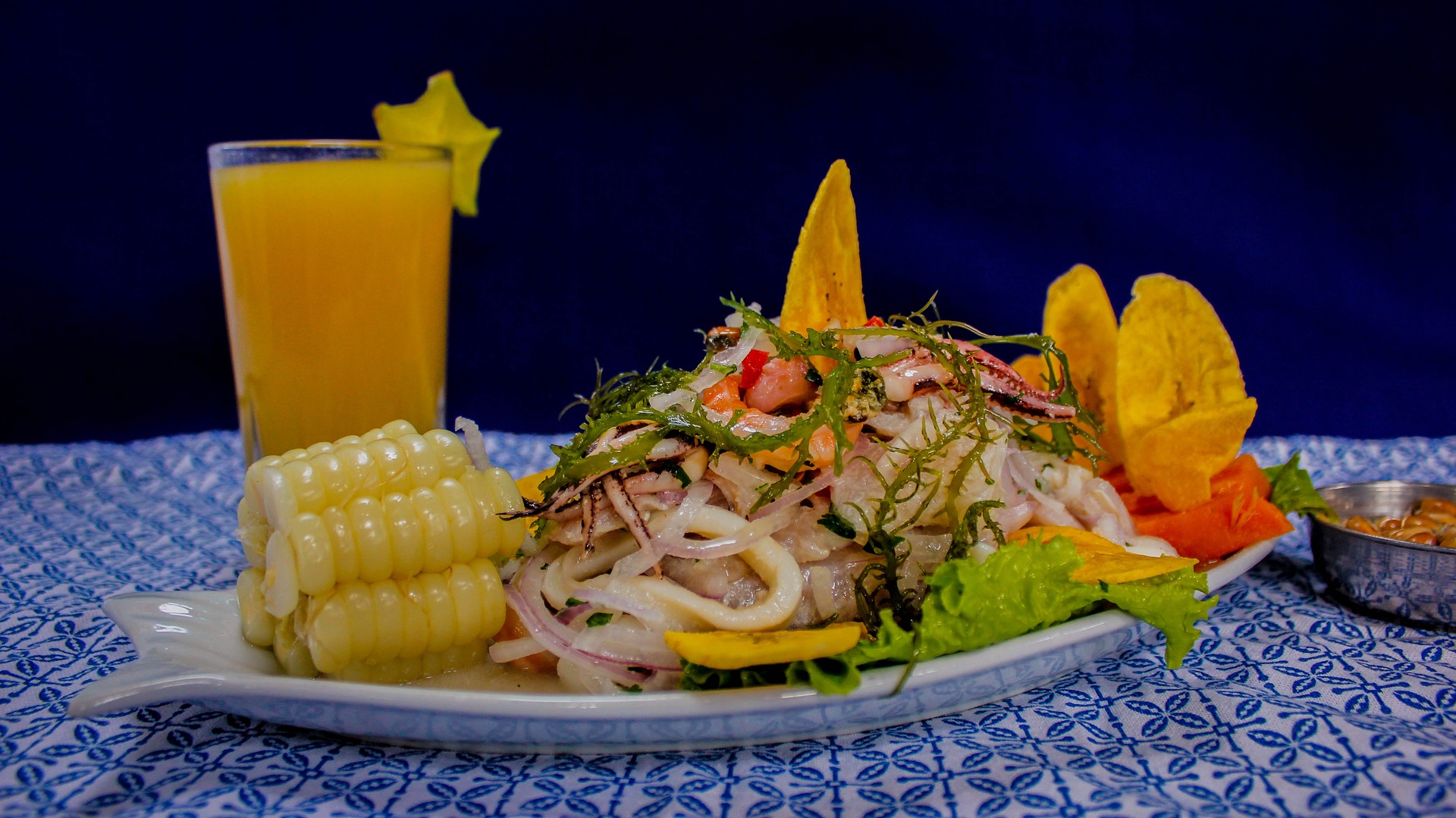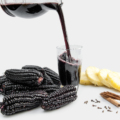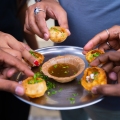Saying Peruvian cuisine might be the most diverse in the world is not an exaggeration. Perú has more than 450 typical dishes –a figure that far exceeds the average number of dishes found in other countries, which typically range from 50 to 100. This profusion of culinary offerings can be attributed to a number of factors.
Gastronomical traditions in Perú have a history spanning over 5,000 years (from pre-Inca times to the post-colonial era), include ingredients from at least 4 different ecosystems (the Pacific coast, the Amazon, the Andes, and the desert), and incorporate cooking techniques from at least four continents the centuries.
The Inca empire was a true agricultural marvel. The Incas grew and traded a wide range of products including corn, more than 4000 varieties of potatoes, and quinoa –just to name three prominent staple crops in Peru. As the Spaniards arrived in the 16th century, new ingredients (onion, garlic, and lemon) were quickly introduced into the culinary tradition.
As the Spanish colonists brought slaves with them, African influences arrived and spread throughout the continent, introducing new cooking methods and ingredients such as cilantro and cassava. A few centuries later, Chinese-Cantonese, Japanese, and Italian communities contributed further ingredients, techniques, and spices into this already complex tradition, transforming Peruvian cuisine into what it is today: a vibrant, seemingly endless blend of flavors and traditions.
The ingredients behind Peruvian cuisine
Perú’s geography is privileged. The altiplano (that is, the Andean Plateau), the Pacific coastline, and the Amazonian rainforests have created the perfect environment for collecting and cultivating an extraordinary variety of ingredients. Such a diverse range of both indigenous and imported products being used in everyday cooking can’t be found anywhere else in the world.
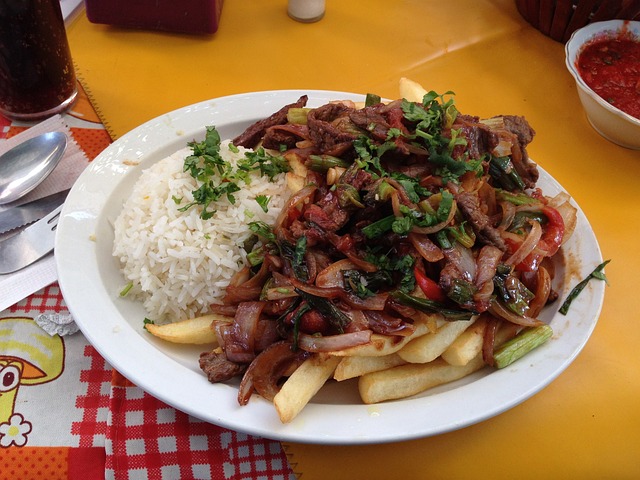
Potatoes are native to the Andes – all 4000 varieties. This tuber was introduced to Europe in the 16th century, and quickly became a staple in many cuisines around the world. It is, of course, the main ingredient of many traditional Peruvian dishes, including the famous papas a la huancaína – a delicious combination of boiled potatoes and a spicy cream made with ají amarillo and cheese.
The camote (sweet potato) is similar to the potato but with a mild sweet flavor and a deep orange color. Perú produces 65% percent of the camotes eaten in the world – with more than 2016 varieties of it. In a like manner, there are at least 35 different types of corn in Perú, and it’s used in lots of different dishes. These include humitas (corn tamales) and choclo con queso (corn with cheese).
Corn is also the main ingredient in chicha, a traditional fermented beverage that dates back to pre-colonial times. It was called aqha or aswa by Quechua-speaking peoples –indeed, this is where the name “chicha” comes from. It was mostly shared at festivals and other important political, social, and religious ceremonies. These days, it’s drank as an aperitif, a refreshment, or even used as an ingredient in some dishes.
Chili peppers, native to Mexico and Perú, also come in plenty of different colors, sizes, and flavors. Each variety has its own place in Peruvian cuisine. For instance, ají amarillo and rocoto, are used to add both flavor and color to dishes. But they can also be used as main dishes, as in the case of the rocoto relleno – a classic recipe from Arequipa, made with chiles stuffed with meat and spices.
Perú is also home to a considerable number of fruit-bearing plant species, with an estimated 650 native varieties. The cherimoya, one of these indigenous local fruits, has bright green skin and a meaty, sweet white pulp. The lúcuma has an intense flavor and aroma. It’s been used since ancient times as the main ingredient in many desserts and ice creams. Achiote, the seed of another native plants, adds flavor to many dishes, but also a distinctive reddish color.
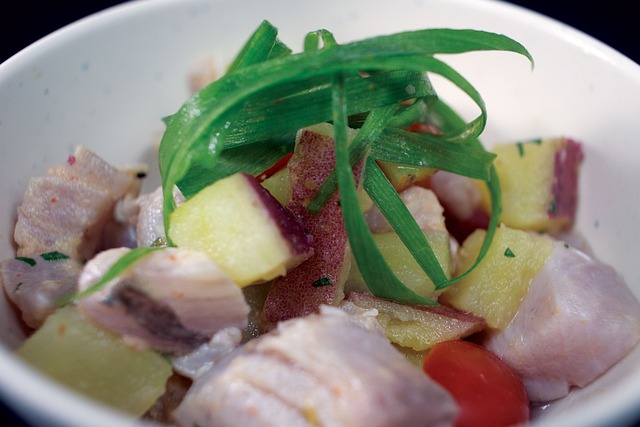
The Peruvian marine and fluvial ecosystems are home to approximately 2000 species of fish. Indeed, Perú has the most diverse river fish fauna in the whole world. Not surprisingly, Perú’s signature dish is ceviche: raw fish marinated in lemon juice, ají, and cilantro –a true feast of fresh and spicy flavors. Although ceviche is predominantly associated with the Pacific region, there are Andean version that include ingredients such as corn and sweet potato.
Meat also plays a major role in Peruvian gastronomy, with chicken, duck, pork, lamb, beef, cuy, and alpaca all featuring heavily. Pachamanca, a traditional Inca dish, is cooked underground using hot stones –an ancient Andean cooking method. It is usually made with meat (mostly lamb, pork, or chicken), potatoes, corn and other vegetables. It is often made for major celebrations and festivals.
Pollo a la Brasa (barbecued chicken) is one of Perú’s most popular dishes. Some claim it was born in Lima in the 1950s, when two Swiss citizens invented a new chicken-grilling machine. The dish is made with a whole gutted chicken that’s been marinated in a special blend of spices and then slowly barbecued. The cooking process gives the chicken a distinctive flavor and juicy texture. It is often accompanied with crispy fried potatoes, fresh salad, and a variety of sauces. In the Amazon, fried potatoes are replaced by fried plantains.
Chifa and Nikkei: A meeting of American and Asian flavors
Chifa is the culinary fusion of Peruvian and Chinese traditions, born after Cantonese immigrants arrived in the country in the mid-19th and early 20th centuries. Chifa restaurants are spread all throughout Perú, offering a wide variety of dishes that combine ingredients and techniques from both cultures. Some of the most iconic dishes include arroz chaufa (fried rice), chicken TiPaKay (sautéed chicken with vegetables and soy sauce), sopa wantán (wonton soup), and aeropuerto (a dish that combines chaufa rice with sautéed noodles). Chifa cuisine has become an essential element of its gastronomic identity.
Nikkei cuisine is another highlight of Peruvian cuisine – the perfect fusion of Peruvian and Japanese culinary traditions, also born in the 19th century, as thousands of Japanese immigrants arrived in Perú, mainly to work on sugar plantations. Soon enough, these Japanese communities took root in the country, adopting, adapting, and enriching the local culture.
For instance, ceviche went through a curious transformation, becoming more of a raw fish dish similar to sashimi. The Japanese also taught Peruvians to use more of the resources found in the ocean, introducing red tuna, seaweed, and octopus.
Nikkei cuisine is all about applying Japanese simplicity to otherwise elaborate Peruvian preparations. Take, for example, the tiradito, which combines sashimi with leche de tigra – ceviche juice. This dish perfectly combines the culinary techniques of both cultures to create a savory, healthy dish.
From simple dishes like papa a la huancaína to elaborate pachamanca, Peruvian and Andean cuisine is all about exploring, enjoying, and celebrating Perú’s exceptional diversity. In an increasingly globalized world, Peruvian cuisine is a beacon of authenticity and creativity, combining flavors and traditions from four continents into one delicious harmony. If you are a foodie, Perú and its diverse culinary heritage are a must.



